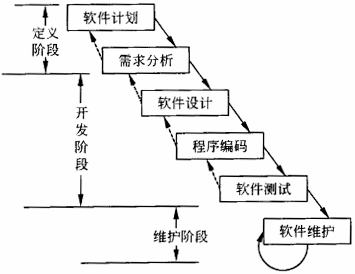问题
问答题 简答题
阅读下列说明,回答问题1至问题3。将解答填入答题纸的对应栏内。【说明】小赵是一位优秀的软件设计师,负责过多项系统集成项目的应用开发,现在公司因人手紧张,让他作为项目经理独自管理一个类似的项目,他使用瀑布模型来管理该项目的全生命周期,如下所示:

项目进行到实施阶段,小赵发现在系统定义阶段所制订的项目计划估计不准,实施阶段有许多原先没有估计到的任务现在都冒了出来。项目工期因而一再延期,成本也一直超出。
请简要叙述瀑布模型的优缺点。请简要叙述其他模型如何弥补瀑布模型的不足。
答案
参考答案:
瀑布模型的优点:阶段划分次序清晰,各阶段人员的职责规范、明确,便于前后活动的衔接,有利于活动重用和管理。
瀑布模型的缺点:是一种理想的线性开发模式,缺乏灵活性(或风险分析),无法解决需求不明确或不准确的问题。
原型化模型(演化模型),用于解决需求不明确的情况。螺旋模型,强调风险分析,特别适合庞大而复杂的、高风险的系统。
